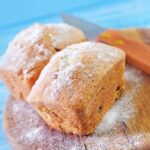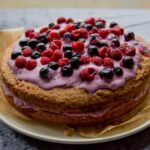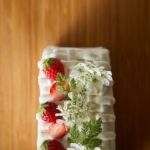Are you looking to add a personal touch to your cakes with beautifully crafted icing decorations? In this article, we will delve into the world of cake decorating and show you how to make cake icing for decorating. Whether you are a beginner or an experienced baker, mastering the art of cake icing can elevate your creations to a whole new level.
When it comes to cake decorating, homemade icing is often the preferred choice over store-bought options. Not only does homemade icing allow for customization in terms of flavor and consistency, but it also gives you full control over the ingredients used. From buttercream to royal icing, there are various types of icing that can be tailored to suit your preferences and the design of your cake.
Before we dive into the step-by-step guide on how to make buttercream icing, let’s explore the essential ingredients that are commonly used in cake icing. By understanding the role of each ingredient, you can create smooth and creamy icings that are perfect for decorating cakes. So, gather your tools and get ready to embark on a creative journey through the art of cake decorating with homemade icing.
Why Homemade Icing Is Better Than Store-Bought
When it comes to cake decorating, one of the most crucial elements is the icing. While store-bought icing may seem like a convenient option, homemade icing always reigns supreme for several reasons. Firstly, homemade icing allows you to control the quality of ingredients used, ensuring that your final product is free from any artificial flavors or preservatives. Additionally, homemade icing gives you the flexibility to adjust the sweetness and consistency according to your preference.
To make cake decorating even more special and personalized, creating your own homemade icing allows you to tailor the flavor profile to complement the specific cake flavors you are working with. Whether you want a classic vanilla buttercream for a simple birthday cake or a tangy cream cheese frosting for a decadent red velvet cake, homemade icing can be customized to elevate your baked creations.
Homemade icing also offers endless creative possibilities for cake decorating. With store-bought options, you are limited in terms of colors and textures. By making your own icing, you can experiment with different food coloring techniques, piping tips, and decorations to bring your unique vision to life.
In the following sections, we will delve into essential ingredients for making cake icing and provide a step-by-step guide on how to create delicious buttercream icing from scratch. Mastering the art of homemade icing is key to taking your cake decorating skills to the next level.
Essential Ingredients for Cake Icing
When it comes to making cake icing for decorating, having the right ingredients is crucial to achieving the perfect consistency and flavor. While there are various types of icing that can be used for decorating cakes, there are some essential ingredients that are commonly used across different recipes. One key ingredient in most cake icings is confectioners’ sugar, also known as powdered sugar. This finely ground sugar dissolves easily and helps to create a smooth texture in the icing.
Another Essential Ingredient Is Butter or Margarine
Buttercream icing, which is one of the most popular choices for cake decorating, typically includes butter along with powdered sugar and vanilla extract. The butter adds richness and flavor to the icing while providing a creamy texture that is easy to spread or pipe onto cakes. For those who prefer a lighter icing, whipped cream can also be used as a base for decorating cakes, offering a softer and fluffier texture.
In addition to confectioners’ sugar and butter, other common ingredients for cake icing include vanilla extract or other flavorings such as almond or lemon extract. These extracts not only add taste to the icing but also help mask any overly sweet flavors from the sugar.
Some recipes may call for milk or heavy cream to adjust the consistency of the icing, making it easier to work with depending on whether you need a thin glaze or a thick frosting for decorations. Mastering these essential ingredients is key to creating delicious and visually appealing cake decorations at home.
Different Types of Cake Icing and Their Uses
When it comes to cake decorating, the type of icing you use can make all the difference in both the taste and aesthetic of your creation. There are several different types of icing that you can choose from, each with its own unique characteristics and uses. Here are some popular options:
- Buttercream: Known for its creamy texture and sweet flavor, buttercream is one of the most versatile icings used in cake decorating. It is perfect for frosting cakes, piping borders, and creating intricate designs.
- Fondant: Fondant is a smooth, pliable icing that can be rolled out and draped over cakes to create a sleek and professional look. It is popular for wedding cakes and special occasion cakes due to its ability to be shaped into various designs.
- Cream Cheese Frosting: Cream cheese frosting has a tangy flavor that complements rich and dense cakes like red velvet or carrot cake. It is great for both filling layers and covering cakes with a luscious coating.
Each type of icing has its own strengths and uses, so it’s important to choose the right one based on your desired outcome. Experimenting with different icings can help you discover which one works best for your specific cake decorating needs.
Whether you’re a beginner or an experienced baker, understanding the different types of cake icing available can elevate your decorating skills to new heights. The key is to practice using each type of icing to get comfortable with their textures and consistencies before applying them to your masterpiece. Don’t be afraid to mix and match icings to create unique flavor combinations and visual effects on your cakes.
Now that you have insight into the various types of cake icing options available, it’s time to roll up your sleeves and start experimenting in the kitchen. By mastering the art of choosing the right type of icing for each project, you’ll be well on your way to creating stunning cakes that not only look beautiful but taste delicious too.
With these different types of icings in your baking arsenal, there’s no limit to the creative possibilities when it comes to decorating cakes.
Step-by-Step Guide on How to Make Buttercream Icing
Buttercream icing is a versatile and popular choice for decorating cakes. It’s creamy, smooth, and holds its shape well, making it perfect for piping intricate designs or creating smooth finishes on cakes. If you want to learn how to make cake icing for decorating, mastering buttercream is a great place to start.
To make a basic buttercream icing, you will need just a few simple ingredients: butter, powdered sugar (also known as confectioners’ sugar), vanilla extract, and milk or cream. The key to a successful buttercream is using room temperature butter and sifting the powdered sugar to ensure a smooth consistency.
Here is a step-by-step guide on how to make buttercream icing:
- In a mixing bowl, beat softened butter until creamy.
- Gradually add sifted powdered sugar in batches, mixing well after each addition.
- Add vanilla extract for flavor and mix until combined.
- If the icing is too thick, add milk or cream one tablespoon at a time until you reach your desired consistency.
- Your buttercream icing is now ready to use for decorating cakes.
| Ingredients | Instructions |
|---|---|
| Butter | Beat softened butter until creamy |
| Powdered Sugar | Add sifted powdered sugar gradually in batches |
| Vanilla Extract | Add vanilla extract for flavor |
| Milk or Cream | Add milk or cream one tablespoon at a time if needed for consistency |
Experiment with different flavorings like cocoa powder for chocolate buttercream or citrus zest for a refreshing twist. With this basic recipe and some creativity, you can elevate your cake decorating game and impress your friends and family with beautifully decorated treats.
Tips and Tricks for Decorating Cakes With Icing
Decorating cakes with icing can seem daunting, but with the right tips and tricks, you can create beautiful and professional-looking designs. One important aspect to consider is the consistency of your icing. Depending on the technique you’re using, you may need a thicker or thinner icing. To achieve a thicker consistency for piping detailed designs, add more powdered sugar. Conversely, if you need a thinner icing for flooding techniques, simply add more liquid such as milk or water.
Coloring your icing is another key aspect of cake decorating. Gel food coloring is preferred over liquid food coloring as it does not alter the consistency of the icing. Start with a small amount of gel food coloring and gradually add more until you reach your desired hue. Remember that colors tend to deepen as they sit, so it’s best to let your colored icing rest for a bit before using it.
When piping intricate designs or borders with icing, it’s crucial to have the right tools. Invest in quality piping bags and tips for better control and precision. Practice different piping techniques on parchment paper before moving onto your cake to gain confidence and improve your skills. And don’t be afraid to experiment with different nozzle shapes to create various textures and patterns on your cakes.
| Tips | Tricks |
|---|---|
| Adjust consistency by adding more powdered sugar or liquid | Use gel food coloring for vibrant hues without affecting consistency |
| Invest in quality piping bags and tips for better control | Practice piping techniques on parchment paper before decorating cakes |
Creative Ways to Use Icing for Cake Decorating
Using Icing as a Piping Medium
One of the most popular ways to use icing for cake decorating is by using it as a piping medium. Whether you’re creating intricate designs or writing messages on your cake, piping icing allows for precise control and beautiful artistic expression. You can use different piping tips to create various shapes and textures, such as flowers, shells, or rosettes. Experiment with different techniques to elevate your cake decorations and impress your guests.
Creating Textured Effects With Icing
Icing can also be used to create textured effects on cakes, adding depth and visual interest to your creations. You can use a spatula or palette knife to create swirls and peaks in the icing, giving your cake a rustic or whimsical look. Another fun technique is using a comb tool to create patterns in the icing, such as stripes or waves. By exploring different textures and techniques, you can make your cake truly stand out and showcase your creativity.
Adding Dimension With Fondant Accents
In addition to using icing as the primary decorating medium, you can also incorporate fondant accents to add dimension and sophistication to your cakes. Fondant allows you to create intricate details like bows, ribbons, or figurines that can elevate the overall design of your cake.
Mix and match fondant accents with piped icing decorations for a visually stunning result. With a combination of icing and fondant elements, you can bring your cake decorating skills to the next level and delight both the eyes and taste buds of those enjoying your confectionery masterpiece.
Troubleshooting Common Cake Icing Issues
No matter how experienced you are in making cake icing for decorating, issues can still arise during the process. One common problem that many bakers encounter is a grainy or gritty texture in their icing. This can often be attributed to not properly dissolving the sugar before adding it to the mixture. To avoid this issue, make sure to thoroughly dissolve the sugar in your recipe’s liquid component before incorporating it into the rest of the ingredients.
Another common issue when making cake icing is achieving the right consistency. Sometimes, icing can turn out too runny or too stiff, making it difficult to work with when decorating your cake.
To remedy this, you can adjust the consistency by adding more powdered sugar if the icing is too thin, or a little bit of liquid (such as milk or cream) if it’s too thick. Gradually make these adjustments until you reach your desired consistency for easy piping and spreading.
Color consistency is also crucial when working with cake icing for decorating. If you need to tint your icing a specific color but find that it’s turning out uneven or streaky, try using gel food coloring instead of liquid food coloring. Gel food coloring provides vibrant and consistent colors without altering the texture of your icing. Additionally, make sure to mix the color thoroughly into the icing until it’s well incorporated to achieve an even hue throughout.
Conclusion
In conclusion, mastering the art of cake icing for beautiful decorations is not only a rewarding experience but also allows for endless creativity in the world of baking. By learning how to make cake icing for decorating, you open up a world of possibilities when it comes to personalizing and enhancing your baked goods. Homemade icing offers a freshness and flavor that store-bought options simply cannot match, making it worth the extra effort.
Understanding the essential ingredients for cake icing, as well as the different types of icing and their individual uses, is crucial in achieving professional-looking results. Whether you prefer buttercream, royal icing, fondant, or any other type of frosting, each one brings its own unique texture and taste to your creations. Following a step-by-step guide on making buttercream icing can serve as a solid foundation for beginners looking to improve their skills in cake decorating.
Moreover, incorporating tips and tricks for decorating cakes with icing can elevate your designs from basic to extraordinary. From piping techniques to color blending methods, there are countless ways to enhance your creations. Creative approaches to using icing for cake decorating can also inspire innovative designs that set your desserts apart from the rest. Remember, practice makes perfect when it comes to mastering the art of cake icing – so don’t be afraid to experiment and push your boundaries.
Frequently Asked Questions
What Kind of Icing Is Best for Decorating Cakes?
The best icing for decorating cakes is royal icing, as it hardens when dried, making it perfect for intricate designs and decorations. Fondant is also a popular choice for cake decorating due to its smooth finish and versatility in creating various shapes and colors.
How Do You Make Smooth Icing for Cake Decorating?
To make smooth icing for cake decorating, it is essential to start with the right consistency of icing. Gradually add liquid (water or milk) to your powdered sugar until you achieve the desired thickness. Using a hand mixer or stand mixer will help ensure a smooth texture without any lumps.
How Do You Mix Icing Sugar for Decorations?
When mixing icing sugar for decorations, start by sifting the powdered sugar to remove any clumps and ensure a smooth consistency. Add small amounts of liquid at a time while stirring continuously until you reach the desired thickness. Adjust as needed to achieve the perfect piping or spreading consistency.

Welcome to my blog about home and family. This blog is a place where I will share my thoughts, ideas, and experiences related to these important topics. I am a stay-at-home mom with two young children. I hope you enjoy reading it! and may find some helpful tips and ideas that will make your home and family life even better!





